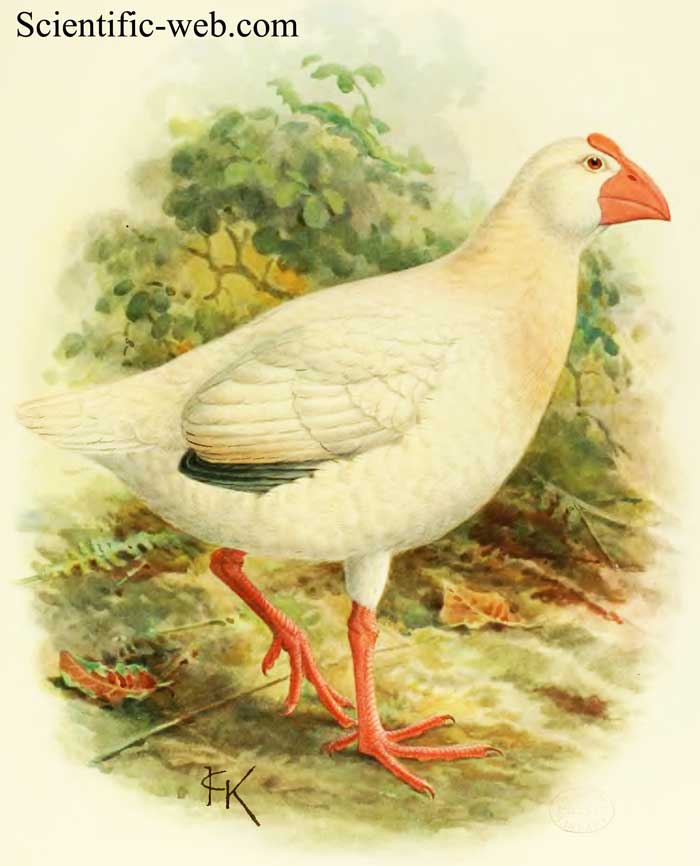Porphyrio albus Cladus: Eukaryota Name Porphyrio albus (Shaw, 1790) References * J.voy.NewS.Wales[White] p.238 Vernacular names The Lord Howe Swamphen or White Gallinule, Porphyrio albus, was a large bird in the family Rallidae endemic to Lord Howe Island, Australia. It was similar to the Purple Swamphen, but with shorter and more robust legs and toes. Its plumage was white, sometimes with a few blue feathers, and it was probably flightless, like its other close relative the Takahe. Similar, entirely blue birds were also described, but it is not clear if they belong to this species or are simply Purple Swamphens (which can also be found on the island). The feathers on the two extant skins are white. This bird was first described by John White in his Journal of a Voyage to New South Wales (1790), which also contained an illustration. It was not uncommon when the bird was first described, but was soon hunted to extinction by whalers and sailors. There are two skins of the bird in existence, in the museums of Liverpool and Vienna. There are also several paintings, and some subfossil bones. * BirdLife International (2004). Porphyrio albus. 2006. IUCN Red List of Threatened Species. IUCN 2006. www.iucnredlist.org. Retrieved on 11 May 2006. Database entry includes justification for why this species is listed as extinct Source: Wikipedia , Wikispecies: All text is available under the terms of the GNU Free Documentation License |
|

